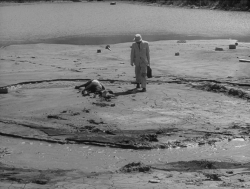Credits
Feature by: Rumsey Taylor, Cullen Gallagher, Katherine Follett, Megan Weireter, Leo Goldsmith, David Carter, Evan Kindley, Jenny Jediny, and Adam Balz
Posted on: 02 June 2008
External links:
To coincide with the Museum of Modern Art’s epic year-long retrospective of Frederick Wiseman’s work, we’re revisiting our 2008 feature on the director, which includes an interview and coverage of the bulk of his filmography. With the likely exception of his controversial and still-buried 2005 film about Madison Square Garden, all of Wiseman’s thirty-eight films will be screening in MoMA’s series – from 1967’s caustic Titicut Follies to 2009’s lithe and vigorous La Danse and the forthcoming Boxing Gym - representing a near-complete survey of one of the world’s greatest living directors.
For over forty years, with a career comprising more than thirty-five films, Frederick Wiseman has been insinuating his camera into seemingly every facet of modern life, from the Bridgewater State Prison for the Criminally Insane in 1967’s Titicut Follies to the State Legislature of Idaho in his 2006 film. In between, his remarkably consistent body of work has been busily chronicling dozens of such places in the United States and abroad. Places, as Wiseman likes to say, are the stars of his films: a primate research center, the Neiman-Marcus store in Dallas, a shelter for victims of domestic violence, an Army training center in Kentucky, La Comédie-Française in Paris, two high schools, and the town of Belfast, Maine. And Wiseman’s interest in these sites and institutions, and the structure of everyday life around them, shows no sign of depletion.
Roughly a contemporary of D. A. Pennebaker, Richard Leacock, and Jean Rouch, Wiseman is generally cited as a pioneer, if not a patriarch, of so-called “direct cinema” or cinéma vérité. (The bulk of his work lies in the field of documentary, but he has also made two feature-length fiction films, Seraphita’s Diary and The Last Letter.) But his relation to these terms – and to contemporary documentary filmmaking in general – is famously oblique, and he has consistently distanced himself from designations that seem to boast of the objectivity of his filmmaking practice. (He has even deemed cinéma vérité “a pompous French term.”) In their stead, Wiseman has proposed the term “reality fictions,” itself perhaps something of a red herring, but one that nonetheless suggests the complex and extensive process of filming, shot selection, editing, and sound design in which he engages. Wiseman’s films may be said to “observe” their subjects, but they do so consciously, with the intention of constructing a narrative structure and sense of drama, no matter how subtle.
Because of the unflinching regularity of his style, one might take any of his films almost at random as an ideal Wiseman specimen: each explores the byzantine functionings of a bureaucracy or social construct – the architecture, the protocol, the red tape – with attention to not one, but a dozen or more individuals. Unlike in the films of Stanley Kubrick, whose preoccupations have often run strangely parallel to Wiseman’s, this is not so much to demonstrate how neatly these individuals are incorporated into the institutional machine – like cogs in a machine, as it were – but perhaps to show how these individuals fail to fit in. In the face of the welfare office, the boot camp, the high school, each person is an exception to the rule, each a special case that fits awkwardly, but serviceably within the parameters of the system. No one subject is more representative of the world at large than any other, and to show that these institutions don’t work perfectly for these people is to show that, in fact, they never can—they can only hope to function adequately, to do their best. And this is not due to some intrinsic flaw in the institutions, just as it is not the basis for any biting satire or vilifying social criticism on the part of the filmmaker. Rather it demonstrates the messy, complex ordering of a society, how it is always a work-in-progress, and how its citizens work – sometimes with temerity, sometimes with frustration, and sometimes not at all – within this impossible, endless group effort.
For this reason, unlike in other films, the viewer may become lost in the events of a Wiseman film, unable to determine their meaning or significance in a sequence of events, or she may interpret the events onscreen herself, determining their values and priority in a sequence or according to the goals of the institutional system being presented. But what Wiseman himself intends in his films is never so easy to divine—his camera’s point of view is inescapable and focused, but effects an air of detachment, even as his subsequent editing and sound design create rhythms and dramatic interest over often very long durations. What Wiseman’s critics thus object to is paradoxically both Wiseman’s supposed manipulation of his material – his imposition of an order and even a narrative arc onto the events he’s filmed – and his failure to adequately support, narrate, or contextualize. Either his films seem to ridicule their subjects or they fail to give them the chance to explain themselves.
But consider the common approach of many current documentary films, which typically seek out notable or eccentric “characters” with which to create drama, or employ music to propel their tales of real life, and one sees Wiseman’s body of work as wholly and recognizably his own. In this way, he seems not so much the father of the modern documentary (though many, including Daniel Kraus in his Work series, may take inspiration from his themes or aesthetic), but rather a precursor to the contemporary art-house film, with its long-take aesthetic, aversion to melodrama and telegraphic narration, and seeming (or partial) remove from the interiority of its subject. In many ways, comparing a film of Wiseman’s to, say, one by the Dardenne brothers or Hou Hsiao-Hsien is indeed a good deal more illuminating than tracking the lineage between Wiseman and Barbara Kopple or Errol Morris.
But naturally what distinguishes his style from that of the modern neorealist art-house is that Wiseman’s subjects are in fact people and not creations. In spite of the fictive or dramatic nature of his films, they nonetheless contain an element of the ineluctably real, however fragmented, decontextualized, or undernarrated it might seem. Wiseman’s subjects are often people in great physical or psychic distress, or indeed people navigating the frustrations, responsibilities, or mundanities of their jobs or their lives in society. In the face of the bare fact of his subjects, Wiseman’s project is thus as suitably modest as his view of some of the institutions he documents: his films attempt to present “a picture of reality, an interpretation of reality, or a new reality [which] depends on how the viewer looks at the film and interprets what he has seen and heard.”1
For the next month, we’ll be featuring reviews of a couple of dozen of Wiseman’s films (many of which are newly available to the public on DVD), as well as an interview with the director himself.
Introduction by Leo Goldsmith
- ^1^ The Threepenny Review, Spring 2004. ↩
By Rumsey Taylor, Cullen Gallagher, Katherine Follett, Megan Weireter, Leo Goldsmith, David Carter, Evan Kindley, Jenny Jediny, and Adam Balz ©2008 NotComing.com
Reviews
-
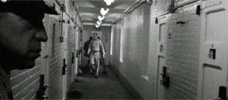
Titicut Follies
1967 -
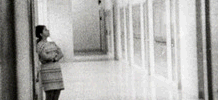
High School
1968 -

Law & Order
1969 -

Basic Training
1971 -

Juvenile Court
1972 -
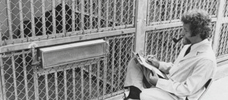
Primate
1974 -
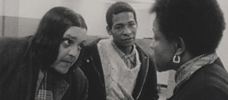
Welfare
1975 -

Meat
1976 -

Sinai Field Mission
1978 -

Manoeuvre
1979 -

Model
1980 -

The Store
1983 -

Blind
USA -

Adjustment & Work
1986 -

Missile
1987 -

Central Park
1989 -

Near Death
1989 -

Aspen
1991 -

Zoo
1993 -

High School II
1994 -

Ballet
1995 -

La Comédie-Française
1996 -

Public Housing
1997 -

Belfast, Maine
1999 -

Domestic Violence / Domestic Violence 2
2001 / 2002 -
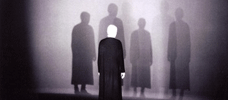
The Last Letter
2002 -

State Legislature
2006
We don’t do comments anymore, but you may contact us here or find us on Twitter or Facebook.


